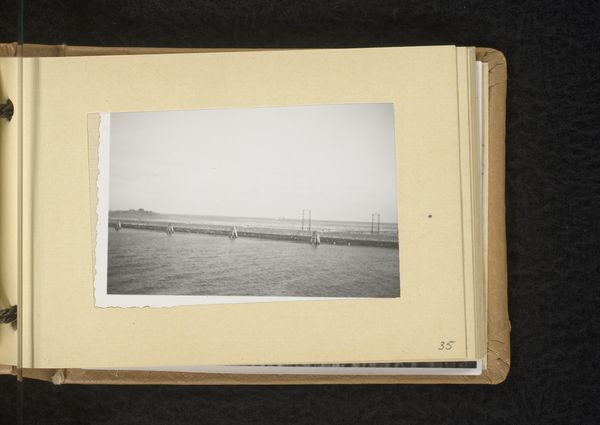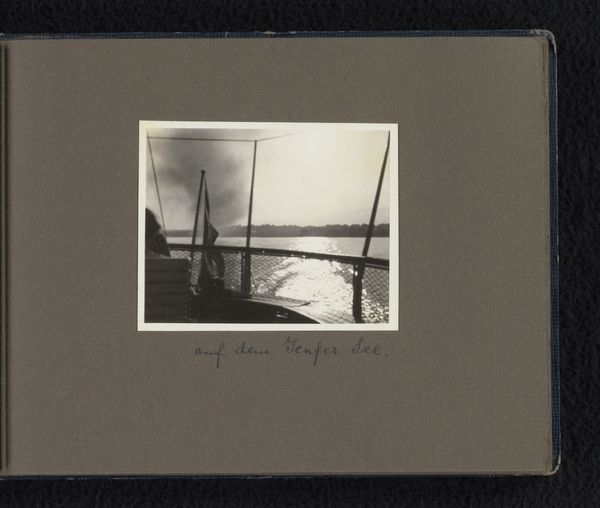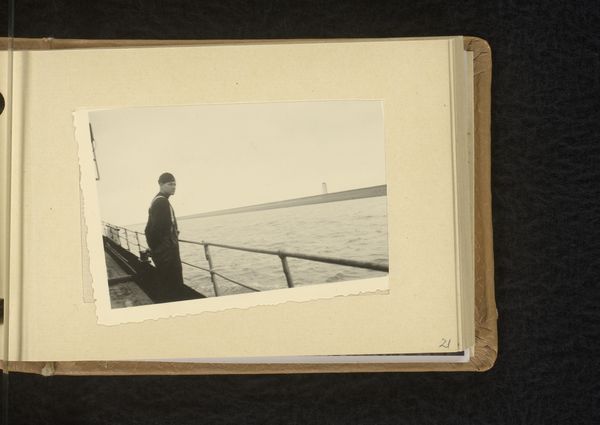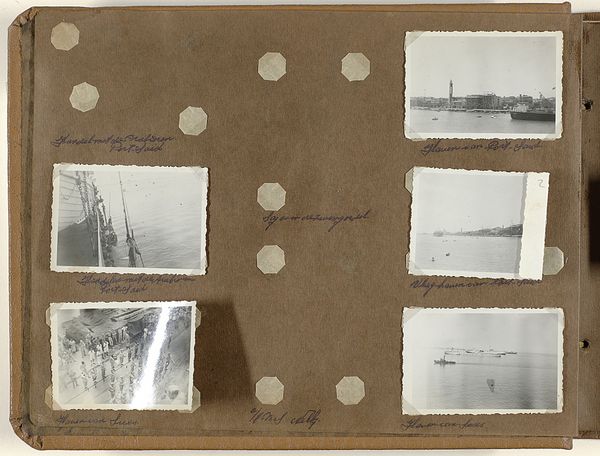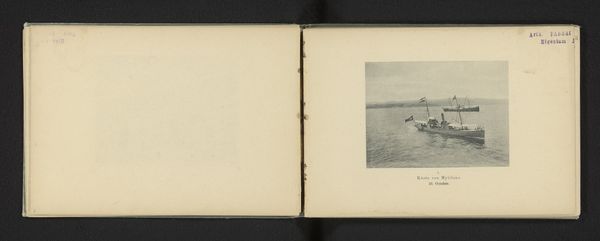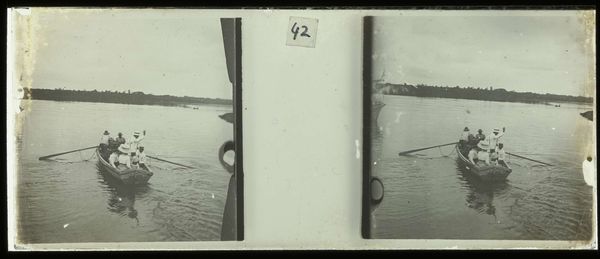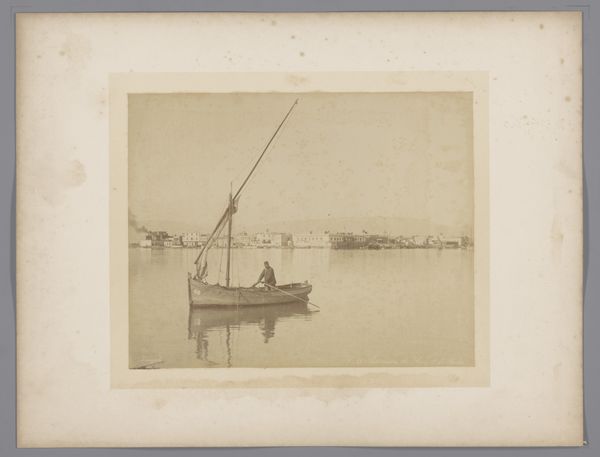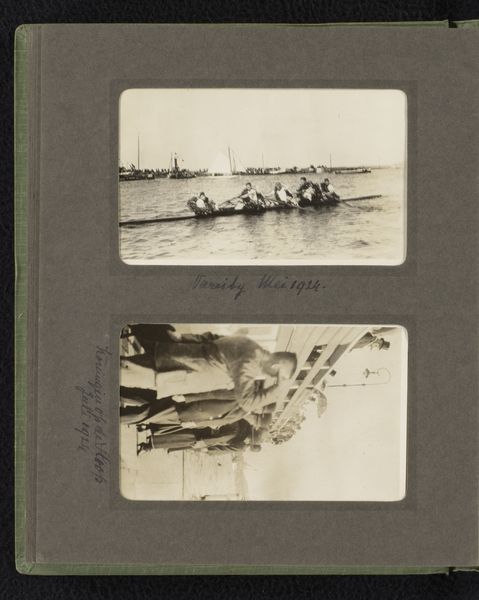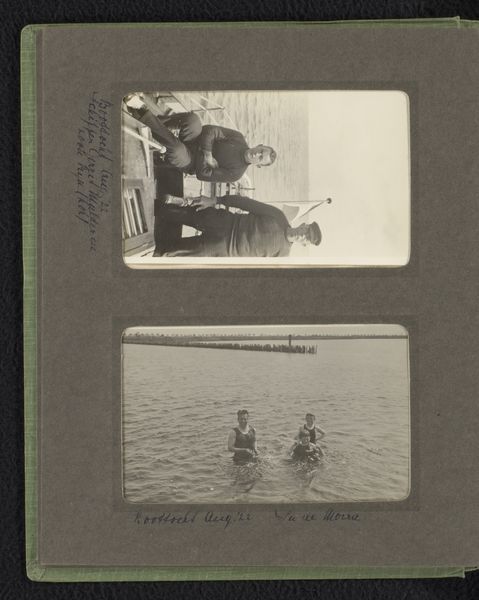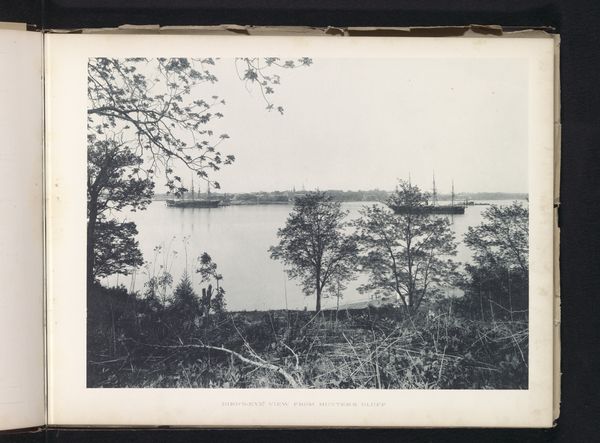
photography
#
landscape
#
photography
#
realism
Dimensions: height 60 mm, width 90 mm, height 85 mm, width 120 mm
Copyright: Rijks Museum: Open Domain
Editor: So, here we have a photograph titled "Kust," taken sometime between 1940 and 1943 by an anonymous artist. It's a landscape shot, but it feels quite somber, almost haunting in its simplicity. What catches your eye when you look at it? Curator: Oh, this image hums with quiet stories! For me, it’s that stillness—a moment caught in the muted tones of wartime perhaps. You almost feel like you could dive into that scene. That framing too—like peeking through the rigging of a ship—creates this amazing sense of being ‘there’ without quite being ‘present’. The way the water meets the sky, the horizon hazy with unspoken tension, invites contemplation, doesn’t it? Do you find yourself inventing stories for this coastline? Editor: Definitely! I keep wondering who was on that boat, looking at that coast. It's a beautiful scene but it feels like there’s something more, some deeper feeling behind it. Almost like a memory fading. Curator: Exactly! Photography has this marvelous ability to capture echoes. Maybe it reminds us that every landscape is a palimpsest, inscribed with layers of memory, waiting to be read. Even an anonymous photograph holds so much more than just what's visible. The medium itself becomes part of the message, right? What new meaning do you feel photography brought at the time for ordinary citizens? Editor: I guess it gave ordinary people a way to capture their own views and feelings in their own voice, and not necessarily through painting and traditional art making. Curator: Precisely! What do you think? Editor: I'll never look at old photographs quite the same way again! It feels as though one can hear and read between the frames... Curator: Fantastic! I feel like every viewing unveils new perspectives! It’s like gazing upon the coastline and feeling that salty mist on your face.
Comments
No comments
Be the first to comment and join the conversation on the ultimate creative platform.

